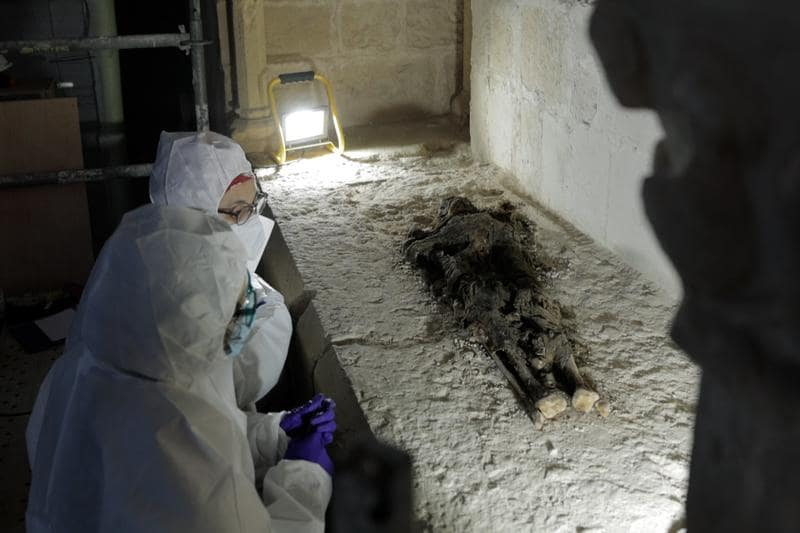In the heart of Catalonia, a hidden treasure trove of history has emerged from the shadows of time. Nestled within the venerable walls of the Royal Monastery of Santes Creus, a team of dedicated archaeologists and anthropologists has unearthed a stunning array of intact human remains belonging to the Catalan nobility of the 13th and 14th centuries. This extraordinary discovery, announced by the Department of Culture of Catalonia, the "La Caixa" banking foundation, and a consortium of researchers, has shed new light on the rich tapestry of medieval Catalan society.
The story begins with the ambitious restoration efforts undertaken at the ancient Gothic cloister of Santes Creus, initiated in April of 2023. As craftsmen meticulously worked to revive the monastery's former glory, they stumbled upon six sarcophagi hidden within its hallowed halls. What they unearthed within these stone tombs surpassed all expectations—a dozen nobles, laid to rest in a time capsule of history, their bodies preserved in a state of remarkable integrity.
At first glance, the presence of undisturbed human remains defied conventional wisdom. Historically, such treasures were often plundered by grave robbers seeking riches or desecrated by the passage of time. Yet, within the confines of Santes Creus, a different narrative emerged. The sarcophagi, left untouched for centuries, revealed a rare glimpse into the funerary customs of medieval Catalonia.
The remains found were in excellent states of preservation. Photo: Department of Culture of the Generalitat of Catalonia
Led by archaeologist Josep Maria Vila, the team marveled at the pristine condition of the royal burials—a testament to the reverence with which they were interred. Unlike other sites ravaged by looters, Santes Creus bore witness to a solemn preservation, akin to a sacred pact between the departed and their caretakers.
But what secrets lay beneath the surface of these ancient relics? As researchers meticulously extracted human tissue and textile fabric samples from the tombs, they embarked on a journey through time, piecing together the puzzle of Catalonia's noble past. Through scientific analysis, they hoped to unravel the mysteries of identity, lifestyle, and societal customs buried alongside these illustrious figures.
The significance of this discovery extends beyond mere historical curiosity. Each bone, each thread of fabric, holds a story waiting to be told—a narrative of power, prestige, and the enduring legacy of Catalonia's medieval aristocracy. From King James II and his consort Blanca d'Anjou to the lesser-known members of noble houses like Cervelló, Cervera, Queralt, Puigvert, and Montcada, the tombs of Santes Creus offer a window into a bygone era of chivalry and honor.
As the research unfolds, the Royal Monastery of Santes Creus stands as a testament to the enduring spirit of Catalonia—a land steeped in history, tradition, and the timeless allure of its noble heritage. With each new revelation, we come one step closer to understanding the lives and legacies of those who shaped the destiny of this remarkable region.
In the shadow of the cloistered halls of Santes Creus, the echoes of the past reverberate through the corridors of time. And as we gaze upon the solemn faces of Catalonia's noble ancestors, we are reminded of the enduring power of history to inspire, enlighten, and unite us in our shared journey through the ages.








